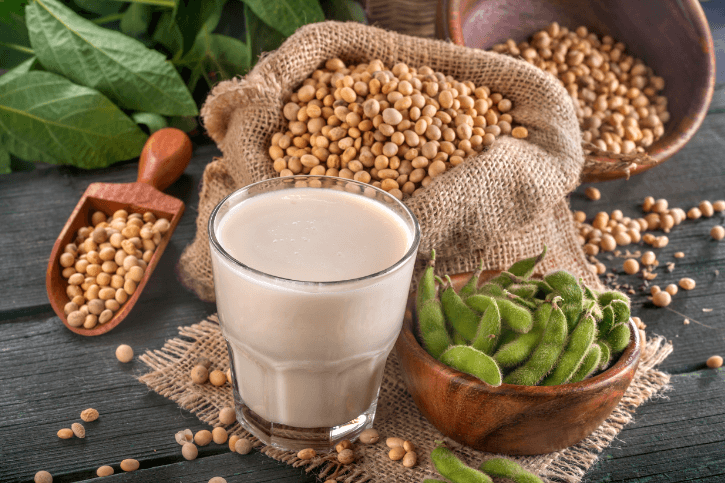
March 30, 2021 2 min read
Health benefits of soybeans
The soybean is perhaps the most economically important bean in the world as is a major source providing vegetable protein for vegetarians. Other than being one of the richest and cheapest sources of protein, soybean is also the most nutritious and easily digested food of the bean family. It is also safe to say that soybean meals can often serve as a high protein meat substitute in many food products.
Along with its rich protein content, soybeans also offer substantial amounts of dietary fiber. Although there is a somewhat high-fat content in soybeans, most of it is in the form of mono and polyunsaturated fat which is considered heart-healthy. The beans are also good sources of calcium, magnesium, thiamin, riboflavin, iron, and folate.
Since there is no starch component in soybeans, they are a good source of protein for diabetics. In addition, many of the phytochemicals found in soybeans are known to be beneficial in preventing debilitating diseases like osteoporosis, heart disease, and certain types of cancers.
Purchasing and storing soybeans
When buying fresh soybeans or edamame, it is important to investigate pods that are blemish-free and firm. At the same time, the beans should neither be mushy nor wilted. Dried beans should be bought from a place that has a good turn over meaning a store that will have a continuous flow of fresh supply.

For storing dried soybeans, care should be taken to keep the beans in a cool, dry place, in an airtight container. This storage technique will help keep the beans well for up to one year. On the other hand, fresh, mature soybeans need to be stored in the refrigerator and used within a day or two.
Edamame should also be stored in the refrigerator and used quickly. If frozen, edamame will keep for a longer time.
❤ Try our USDA certified organic Soybeans ❤
Other Soybean Articles:
Thanks for reading this Be Still Farms Blog article. To sign up for more news/articles and/or recipes, click here. For more about us, click here. To shop our certified organic products, click here.
Please comment and share and we look forward to serving you in the future!
Comments will be approved before showing up.

January 27, 2025 3 min read
Flaxseed, the tiny yet powerful superfood, is packed with nutrients that can support weight loss. From curbing hunger to stabilizing blood sugar, this guide dives into the science of how flaxseed can help you shed those extra pounds.

December 11, 2024 3 min read
Discover three quick and easy soup recipes featuring organic small red beans. From a classic vegetable soup to a creamy potato blend, these wholesome recipes are perfect for chilly days and busy weeknights. Packed with flavor and nutrition, these soups will warm your heart and soul this winter!

December 06, 2024 3 min read
This vibrant and nutritious Green Lentil Salad combines tender lentils with grilled chicken, fresh vegetables, and a zesty lemon dressing. Packed with protein, fiber, and essential vitamins, it’s the perfect healthy meal for any time of day.
© 2025 Be Still Farms- Real, Fine Organics.
Privacy | Terms | Refund Policy | Organic Certification
